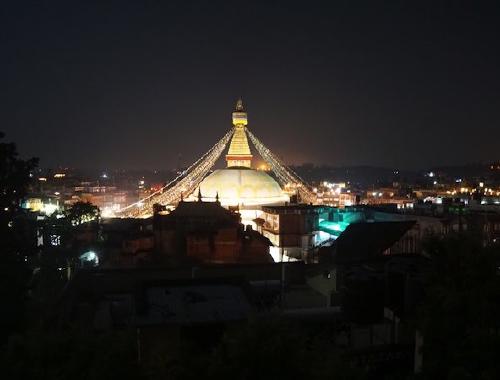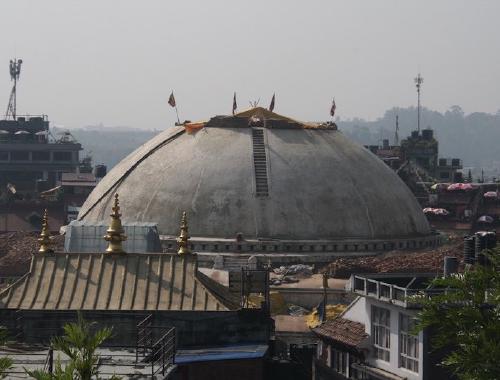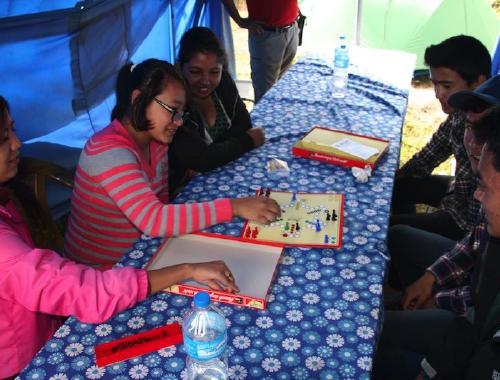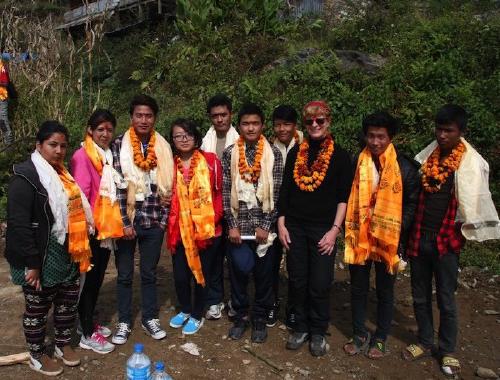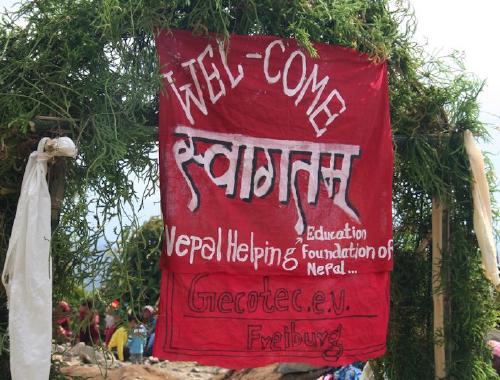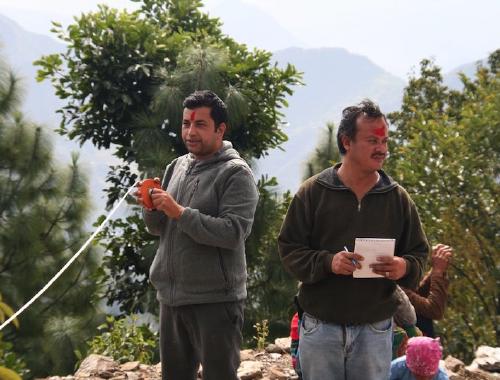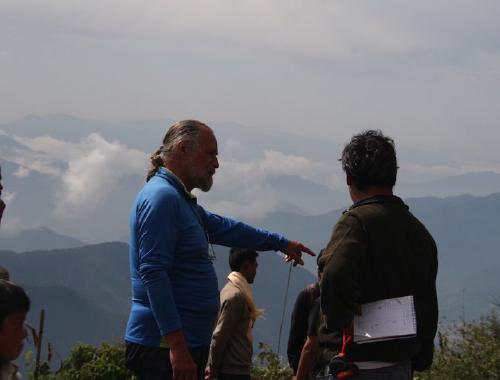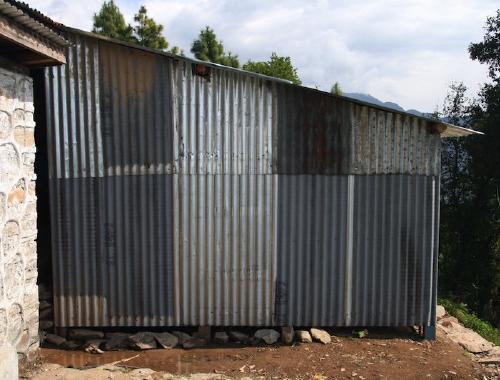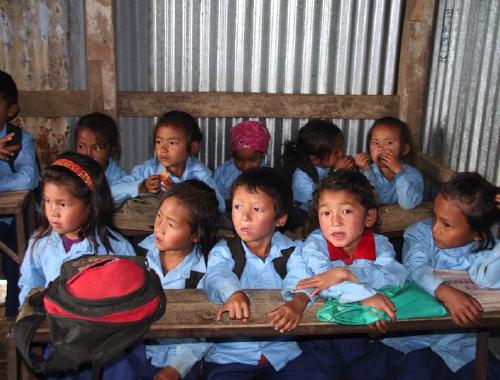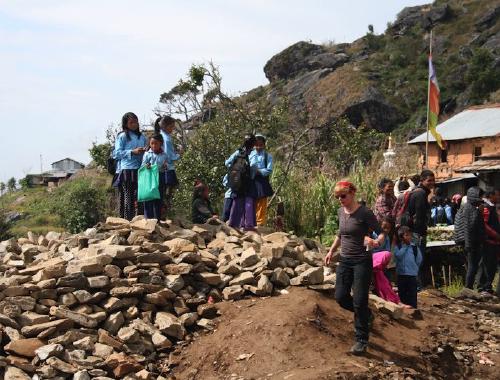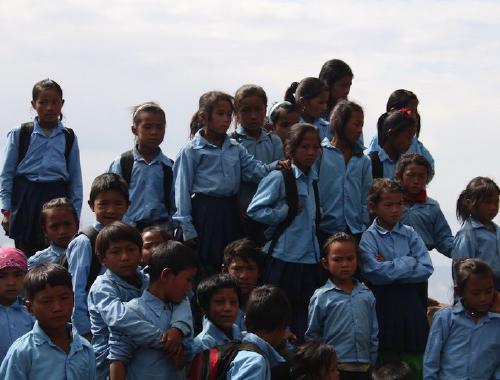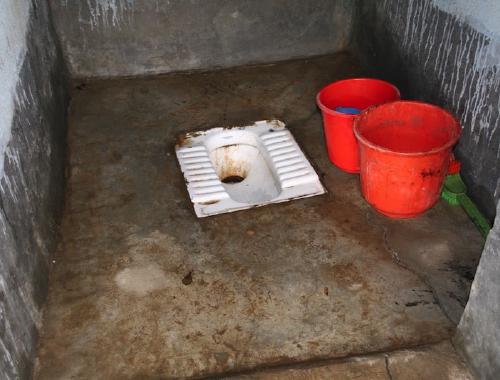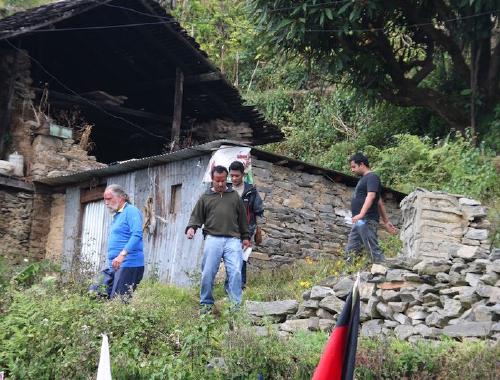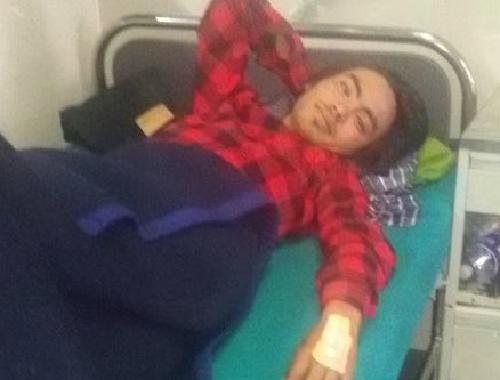The consequences
The cost of one litre of petrol on the black market is 6€.
Families no longer can cook because gas is no longer available. Some already now have to prepare the indispensable on open wood fires. As of November 20th, the government is selling wood for cooking outdoors to the public - wood of trees which Nepal sorely needs as protection of the environment and as safeguard against common erosion. People collect and burn refuse to be able to cook.
People can’t go to work. There is, of course, no sick pay.
Means of transport are life-threateningly overloaded. The consequences we had to witness grimly (see: We mourn).
Provision of foodstuffs is difficult, prices are rising for staple foods as well.
People die because they have no means of transport to a hospital. In Kathmandu, currently 40% of urgently required operations are cancelled.
Reconstruction works after the earthquake are impeded immensely. Increased cost of transport (if at all transport is possible), higher cost of materials (because of increasing scarceness) and increased corruption (since who has more, has better chances) are only some of the stumbling blocks.
Tourism is suffering another setback since guests cannot be transported and prices are rising. Sometimes hotels and inns no longer can prepare food or have to restrict their offering severely.
Many restaurants and hotels are closed, not only for want of gas but also because of lack of tourists. Many jobs have been lost.
Prospects
China has promised petrol deliveries to Nepal on short notice. However, the only open and very narrow road between China and Nepal has great risks. The delivery of 200 lorries full of petrol is a drop in the bucket. Right now, deliveries of gas are not at all in sight.
In the negotiations with India no concessions appear in sight. Demonstrators, presumably hired by India, are increasingly heating up the situation at the borders. On 11/21/2015 they blast a relief shipment with urgently required medicaments.
On 11/24/2015 the government dispatches troops to the Indian border.
It will take 3 - 4 weeks till all parked motor vehicles even can get going again, in case there are sufficient deliveries.
Kathmandu after the earthquake
At first sight, the consequences of the earthquake are for the people in Kathmandu no longer as salient as they are for the people in the affected mountain regions. Most habitants of Kathmandu don’t even notice the big refugee camps in Kathmandu and Bhaktapur. Even Maya found it difficult to visit these camps with us. The refugees predominantly come from the mountains or from destroyed villages in the Kathmandu valley. We can’t imagine how they spent the awful rainy season there and how they will survive the winter there, but for these people it is - as an alternative to “nothing” - a solution. The principal infrastructures like water supply, showers, toilets and basic medical aid are covered by charities. We could not observe state-run support.
Of course, destroyed houses and streets can be seen in town as well. Of course, there, too, people live in unsafe houses, in dwellings due to be torn down. Of course, there as well people with injuries have to see how to get along.
Two families in our project live in endangered rooms. They are, no wonder, among the poorest we look after. A move somewhere else is not an option for them all the same.
Bhorle village after the earthquake
Bhorle, like so many Langtang villages, is, apart from a few exceptions, ruined or provisionally patched up. Long-term earthquake-safe reconstruction is almost unnoticeable here. Governmental support is not apparent. Wherever building activities for the communal benefit take place, NGOs are at work. Where people have the means to reconstruct their houses, old mistakes are, according to our architects, frequently repeated. Organized state-run reconstruction is not noticeable.
The idea, that people want to survive the winter there in the provisional huts is unimaginable for us Europeans. Quick improvement is not in sight. Thus it will be necessary to get by with what is there. How many deaths from exposure to cold and dampness will have to be bemoaned, we will never find out.
Let’s get going
The journey to Bhorle together with seven of our older godchildren was an important step towards further collaboration with the school committee of Bhorle, with the the teachers and with the villagers.
That seven of our older godchildren could accompany us was a great gift, also for us adults. The cleavage between townspeople and people living in the countryside is grave. Travel inside Nepal only takes place for very important reasons, not least because of the high cost associated with it. The aversion to country life is very strong among our youths. The heavy environmental burdens in Kathmandu they see as normal. The advantages of city life are patent to them: approach to a modern life.
The time was a drastic experience for our youngsters. To see how people gain their livelihood in the mountains and how they have to cope after the earthquake, how it feels to breathe good air. None of our youths had been outside of Kathmandu valley before, and none had seen the conditions of life of their ancestors. The time together perhaps has straightened out a few points in their minds.
